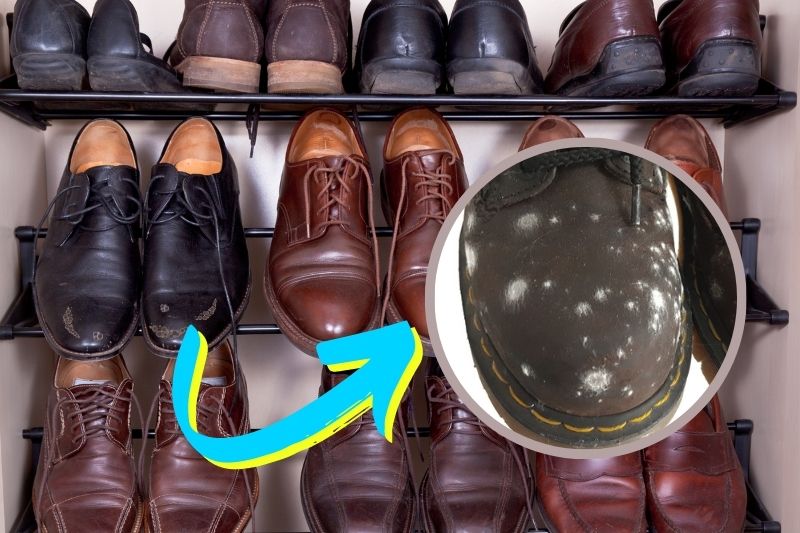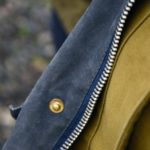The need to minimise visual clutter can lead many of us to store our shoes in the wardrobe. This is especially the case for shoes we don’t wear as often.
Instead of piling them all up on the shoe rack, it looks much neater to store some out of sight.
This can seem like a great idea until you pull your favourite shoes out of their winter storage and notice white, fuzzy mould growing on the surface.
You’re sure they were dry when you put them away, so what happened?
In this article we take a look at how shoes get mouldy when stored in the wardrobe and how to prevent it from happening.
Why Is Mould Growing on my Shoes in the Wardrobe?
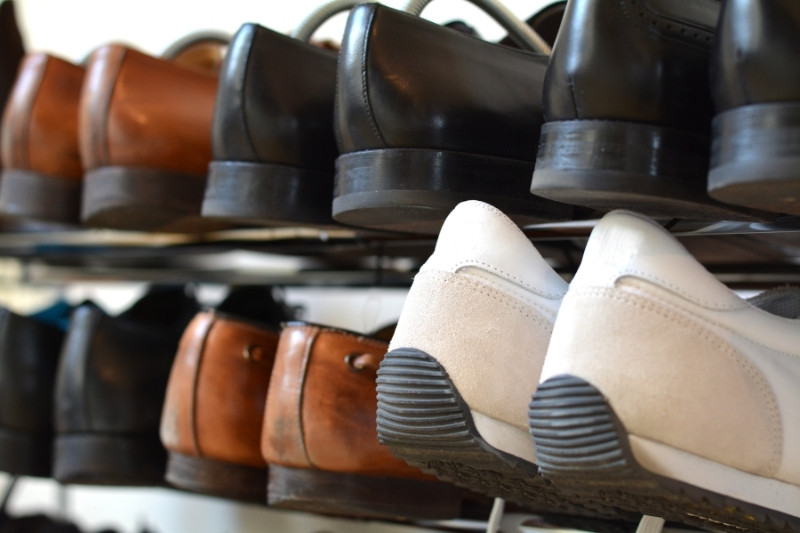
Before diving into how to prevent mould growth on shoes, it’s useful to know how the mould got there in the first place.
It’s unpleasant to consider this, but our shoes are extremely susceptible to humidity. Our feet are strapped inside them all day and often sweat. This sweat doesn’t escape easily, as most shoes are not very open.
Plus, shoes often have several layers including insoles and the interior of the shoe. All of these factors mean that moisture can get trapped easily.
On top of this, our shoes are in contact with moisture from the outdoors, whether that’s from puddles, rain or dirt.
If we then fail to fully dry out our shoes before putting them into storage, they can become mouldy. Wardrobes are typically dark and often not well ventilated, the perfect conditions for mould to grow.
How to Prevent Mould from Growing on Your Shoes in the Wardrobe
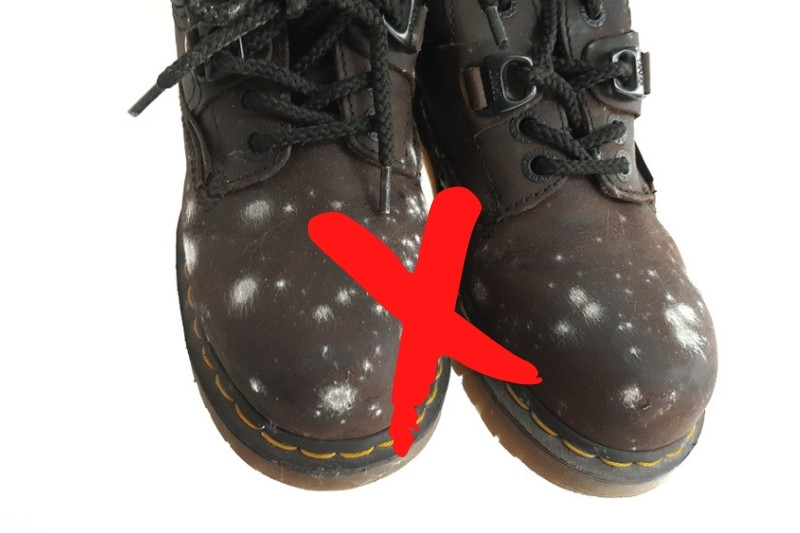
Luckily, there are many steps you can take to reduce, and even prevent, mould from growing on your shoes.
-
- Dry your shoes – Air dry them or dry them by a radiator, either way, it’s important that they’re fully dry before storing them.
- Clean your shoes – Don’t clean them with water unless necessary. Instead, brush them with a soft bristle brush to remove dirt or dust.
- Silica gel packets – You can place these in your shoes to absorb excess moisture.
- Metal furniture – Avoid wooden storage racks inside a wardrobe as wood is more susceptible to retaining moisture than a wire rack.
- Store shoes on an open rack – Rather than storing shoes in a closed cupboard, store the shoes that you use regularly on a shoe rack so they can dry out fully.
- Check your wardrobe – Make sure it’s not too susceptible to humidity by being close to a source of moisture like a leaky pipe, or too close to the wall.
- Don’t tightly pack your shoes together – Make sure your shoes have space so that airflow can get to them and dry them out.
- Don’t store shoes in plastic bags – Plastic can trap moisture, so as previously mentioned, store shoes on an open wire rack.
- Clean your wardrobe regularly – Make sure there’s no mould growing in your wardrobe that could spread to your shoes. Regular cleaning also encourages airflow.
-
- Invest in a dehumidifier – If you feel like you’ve exhausted all of the other options, you could place a dehumidifier in the same room as your wardrobe and keep the doors open when it’s on.
Is Mould on Shoes Dangerous?
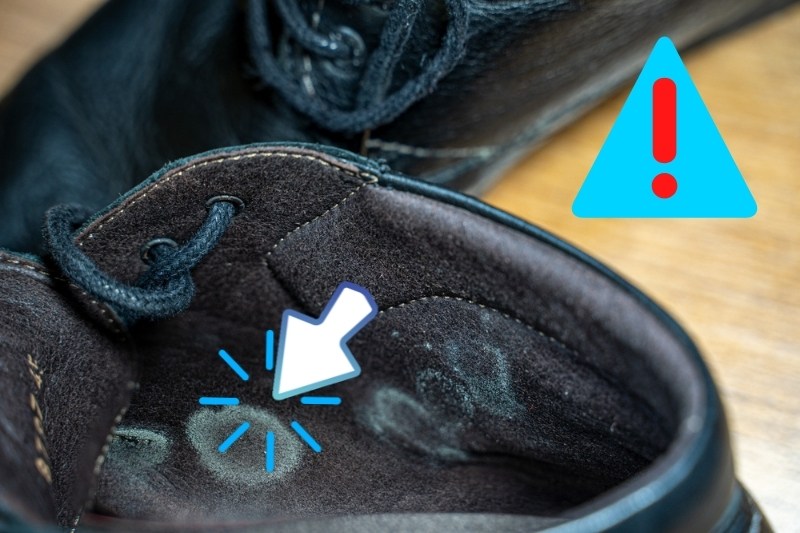
To put it simply: yes, mouldy shoes can be dangerous.
Handling the shoes can expose you to the mould, which itself can cause respiratory difficulties. Wearing the shoes may cause the mould to spread and potentially cause toenail infections.
That’s if the shoes survive. Mould can also damage certain fibres meaning that the shoes may not be able to be saved.
How to Treat Mould Growth in the Wardrobe
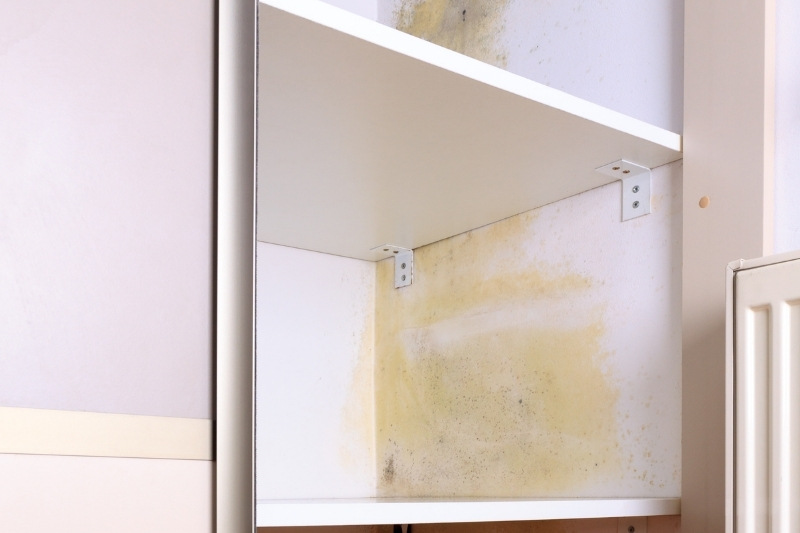
The first thing you should do, wherever the mould is growing, is to ventilate the area and wear eye, mouth and hand protection wherever possible.
If you find mould growing in your wardrobe it can largely be treated with either white vinegar or bleach. Follow these steps to remove it:
- Mix one part water and one part vinegar, or one part bleach to three parts water. Never mix bleach and vinegar.
- Use a spray bottle to apply the mixture to the affected area.
- Wipe it down with a cloth.
- Rinse with water to remove any extra vinegar or bleach.
- Dry the area with a clean towel.
If this doesn’t seem to work, try the following:
- Use undiluted vinegar.
- Leave the solution to dry or overnight.
- Invest in a mould spray for the appropriate surface.
If the mould is on your clothes, you can pre-soak the items in bleach or vinegar and then wash them as usual.
As for shoes, the mould removal method will depend on the material of the shoes. Be sure to first take them outdoors if possible.
Canvas
- Use a brush to remove all the mould from the surface.
- Vacuum up any tough to remove mould.
- Mix a solution of water and isopropyl alcohol (according to the instructions).
- Use a cloth soaked in the solution to wipe off the remaining mould.
- Make sure the shoe is completely dry before storing.
Leather
Follow the above steps replacing the alcohol mixture with a vinegar and water solution.
Suede
- Insert newspaper into the shoes to absorb excess moisture.
- Brush the surface with a suede brush as the material is too delicate for a hard bristle brush.
- Apply undiluted vinegar to a cloth and wipe off any extra mould.
- Again, make sure the shoe is completely dry before putting it back.

In The Wash is your guide to the best laundry and cleaning products, tips and tricks. Our mission is to solve the UK’s cleaning and laundry dilemmas!
